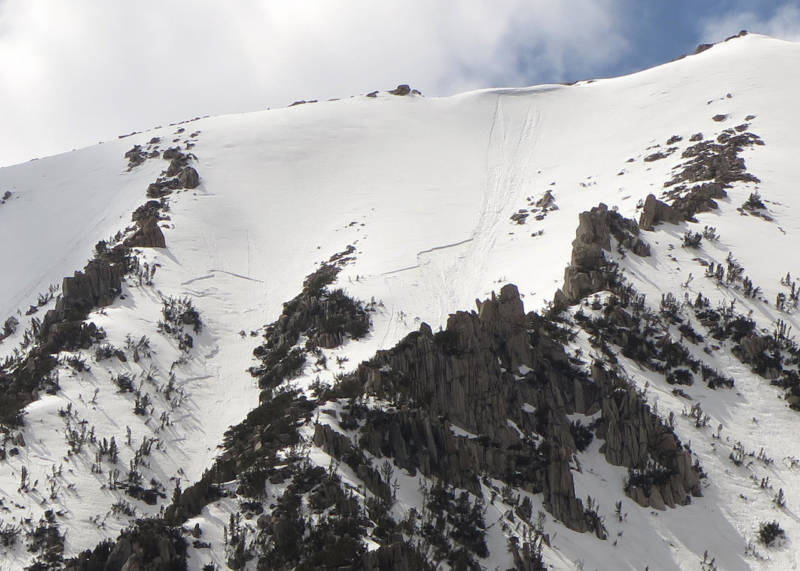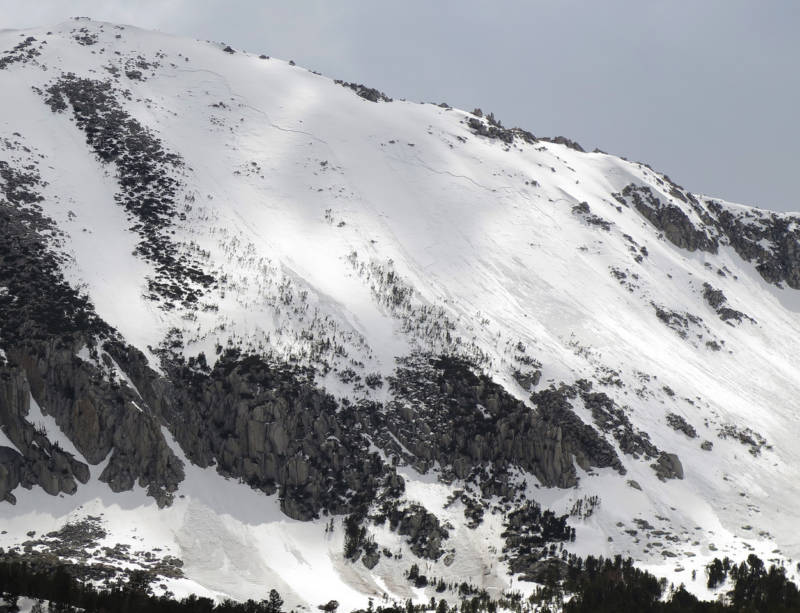Heavy snowfall in winter and spring in the Sierra Nevada, followed by relatively cool then rising temperatures in June, has led to an ongoing risk of avalanches into the summer — posing a threat to long-distance hikers on the famed Pacific Crest Trail, experts say.
Avalanches in June? Heavy Sierra Snowpack Still Poses a Risk for Some Hikers

Thousands of people attempt to hike what’s known as the PCT every year, more than 2,600 miles through California, Oregon and Washington. And as the weather warms up, hikers hit the trail. But snow is still on the ground — and above normal for this time of year in some areas, said Emily Heller, a meteorologist at the National Weather Service in Sacramento.
“Temperatures are definitely increasing but they haven't got baking hot up high yet,” SP Parker, owner of the Bishop-based Sierra Mountain Center who has about 40 years of mountain guiding experience, said Thursday. What that means for conditions: “It's going to keep on avalanching for a little while yet,” he added.
Parker said he saw a “wet slab” avalanche — where the top surface was coming off as one cohesive layer — last week near the Sierra Crest ridgeline in Rock Creek.
“Normally we don't get those in June,” Parker said.
“This year things (avalanche danger) are persisting longer than usual and we've got different problems than usual," he said. "I have lived in this area since 1980 and I can't remember seeing quite such a prevalent and pervasive wet slab cycle."
The Eastern Sierra Avalanche Center and the Sierra Avalanche Center have closed for the season, but people continue to post their observations to their websites. Some people reported avalanches in late May and early June, although those reports are unverified.
Increasing numbers of people are hiking the trail, about 5,000 last year, according to the Pacific Crest Trail Association.
“This year is different because of how much snow there is,” said Jack Haskel, the association’s trail information manager. “And that means that there's continued avalanche danger and ... all that snow melting in the stream crossings can be pretty dangerous out there."
“It's too early for most people to head out to the high peaks,” he said last week.
But people are out on the trail — it’s “prime time” — and you don’t have to be up on the peaks to encounter danger, Parker said.
“It's also what happens up above you. And there's certainly areas where the PCT and the JMT (John Muir Trail) cross through what we would call avalanche terrain, which is where you're exposed to a threat maybe from above,” he said. “There's also the high passes ... where you are actually up high in those conditions. Right now, people are beating out a trail through there, which can help. It can also give people a false sense of security.”
Parker said conditions are moving into a "wet loose" avalanche activity, which is “the classic idea of a snowball rolling down slope, gathering up more and more snow around it, and eventually becoming sort of a large wet mass that flows downhill.”
"I was out recently and looking up at the mountains and I'm seeing more of that type of activity," he said Thursday.
Though conditions were moving toward more stability, Parker, a former president of the American Mountain Guides Association, said he was advising hikers to be cautious and even wait to embark upon their PCT adventure.
"There's some years, such as this year, where maybe it's just not a good idea to do the PCT," he said. "Be prepared to come back and do it when things are in your favor. The key to success in the mountains is not necessarily rolling the dice when you don't have to."
